E-Commerce Best Practices and How to Use Them to Grow
Today, global e-commerce is a $2.7 trillion market.
To put it perspective, if e-commerce was a country, it would have the fifth largest economy in the world.
Clearly, this presents a world of opportunity. And millions of other people know it too. So, you need to follow the best practices in e-commerce to make your store stand out.
A decade ago, a smart site with great products would have been sufficient. Now, it’s important to be proactive and get ahead of your rivals. Here are some of the most common challenges that online retailers face:
- Sell the right products: The central part to any e-commerce store is the products you sell. It’s stating the obvious but if you’re selling something no-one wants, then no amount of marketing will work.
- Attract visitors to your site: There are thousands of e-commerce stores opening each week, all competing for similar audiences. You need to find ways to attract visitors to your site to get ahead of the others.
- Conversion rates: The average conversion rate for an e-commerce site is 2.5%. There are a number of reasons for this, including the fact that shoppers often like to browse before they buy. The challenge is to make them buy on your site.
- Using the right partners: With countless agencies and tools out there, it can be a minefield. It takes time and research to find the right partner for your business, whether it’s technology or a service.
- Hiring the right team: It’s the people that make your company click and deliver the customer service you need. Technology can help but it can?t replace a great team.
With those factors in mind, you should utilize the following examples of best practice in e-commerce:
1. High-Quality Images
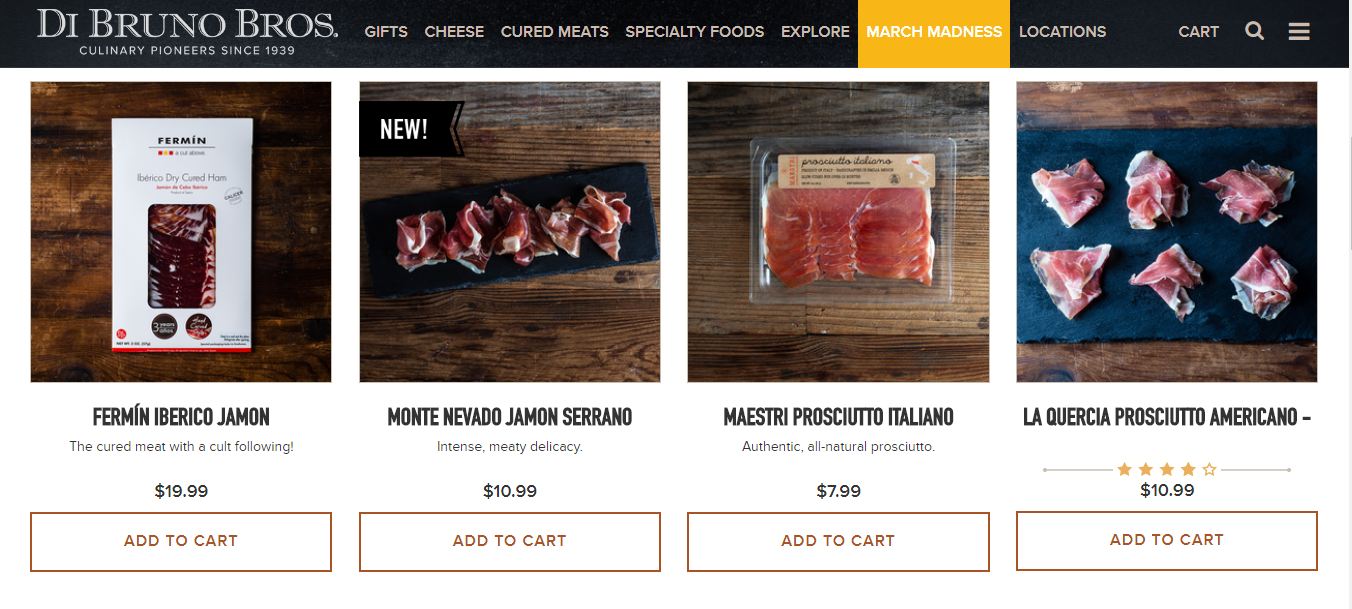 (Source: Dibruno.com)
(Source: Dibruno.com)
This is the part where first impressions really count. The human brain processes images 60,000 times faster than words.Added to the fact shoppers need to see what the products look like, it’s critical you have the best images possible on your site.
Take high-end grocery retailer Di Bruno Bros for example. Images of the product are placed against an attractive wooden table top. Using real-life settings creates a picture in shoppers’ minds that helps them to imagine owning the product.
Adding small touches like this will boost your conversion rate and give your brand a lift.
2. Deliver a Clear Message
When shoppers visit your site, you need to ensure they know exactly what your store provides.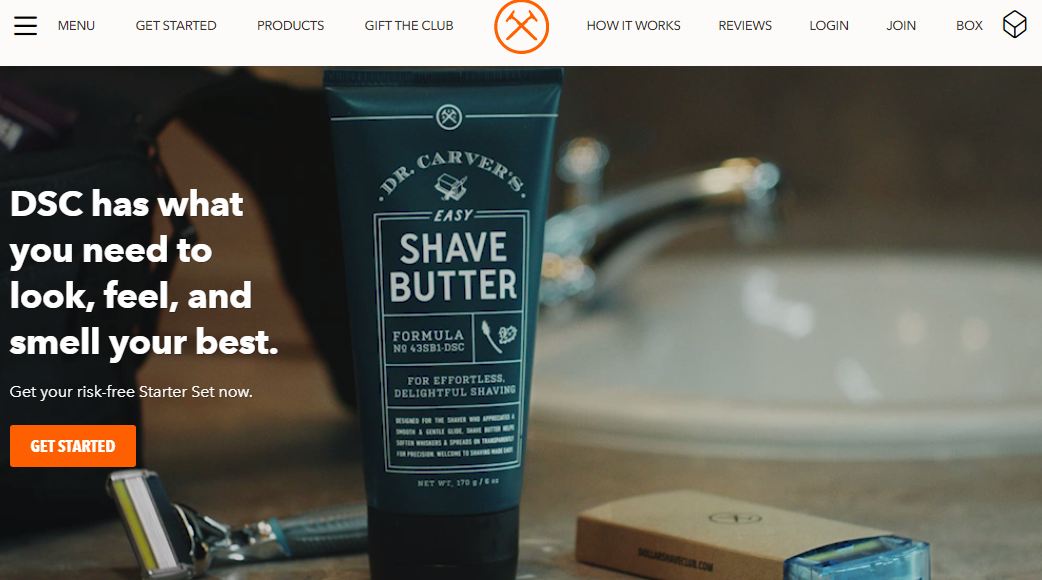 (Source: Dollarshaveclub.com)
(Source: Dollarshaveclub.com)
The Dollar Shave Club has proven to be top of its game when it comes to marketing. The homepage delivers a clear message about the products the brand offers.
As well as using written content, Dollar Shave Club uses imagery to promote a variety of products. If you failed to take the cue from the name of the brand, the introductory video should leave you in no doubt as to the type of brand they are.
The video itself uses humor to touch on some of the common shaving problems the brand seeks to solve: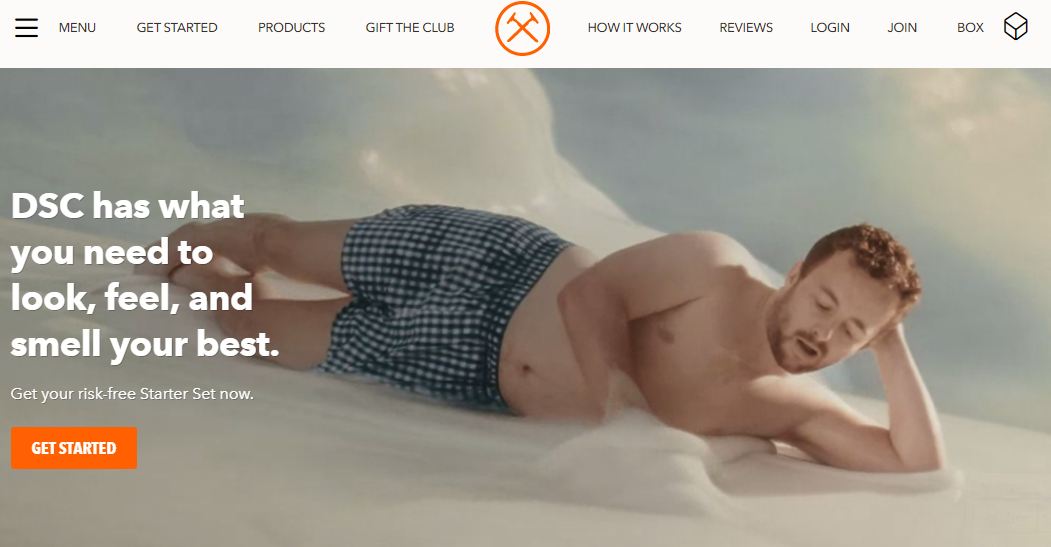 (Source: Dollarshaveclub.com)
(Source: Dollarshaveclub.com)
The imagery of a man sliding down a mountain of shaving foam delivers the message that these shaving products give you a smooth experience, though in a humorous way. The added factor of amusement ensures the visitor will not forget the brand in a hurry.
The entertainment element should only be used to support the message, not distract from it. The Dollar Shave Club strikes that balance masterfully. The result leaves site visitors with a clear understanding of what the brand is about.
3. Mobile-Responsive Sites
It’s 2018 and we are still writing this.If your e-commerce store is not mobile responsive, you are losing out. In more ways than one.In the United States, mobile commerce (m-commerce) sales now accounts for 34% of total online retail. This figure is expected to rise to over 50% by 2021.
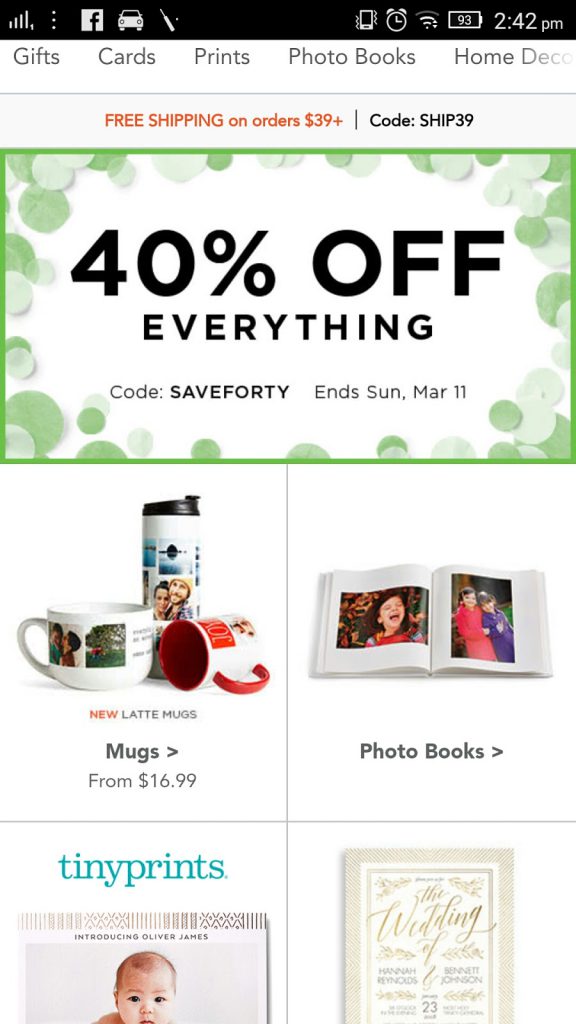 (Source: Shutterfly.com)
(Source: Shutterfly.com)
Image-publishing service Shutterfly absolutely nails its mobile site. With each category split into sizable squares, users can easily see and click through to where they want to go.
The overall design allows smooth and seamless navigation throughout the site, whether it’s on desktop or mobile. There’s no excuse for your e-commerce store not to be fully accessible across multiple devices.
Another compelling argument for optimizing your site for mobile follows Google’s lead. Since 2016, the search engine giant has been ranking mobile-friendly sites ahead of desktop-only ones.
To find out what Google makes of your site’s “mobile friendliness” you can check with this test.If you want to get your mobile visitors to make a purchase on your site, and be found on Google, then you know what you need to do.
4. Win Trust
Unless you are a globally recognized brand like Nike or Apple, most first-time visitors will not know about your store.
Until you give them a reason to, they’re also unlikely to trust your brand.
There are a number of ways of doing this:
- Enable and display customer reviews: Reviews could be about your products or customer service. Surveys suggest up to 84% of shoppers trust customer reviews as much as personal recommendations.
- Press reports: This is a great way to give your e-commerce store authority. If you have any press reports, share them on your website or social media. Pages.
- Security assurances: One of the biggest concerns with online shopping is security. With a number of data breaches making the news, you need to show your customers that their details will be safe with you. If you have antivirus, or other security software on your site, display the badge of the provider.
- Contact details: Customers like to know that they can get hold of you if they have any questions. By displaying a physical address, email address, and phone number, you can give shoppers an extra layer of confidence in your brand.
The overall approach is to be open and engaging from the very moment shoppers come into contact with your brand. The idea is to show you have nothing to hide. Once you have their trust, they will be far more likely to buy from your site.
5. Speed Up Your Website
There’s a silent killer for your conversion rate.Your page loading speed.Here’s a number of stats from Kissmetrics explaining why:
- 47% of consumers expect a web page to load in 2 seconds or less
- A 1-second delay in page response can result in a 7% reduction in conversions
- A 1-second page delay could potentially cost a $100,000/day e-commerce site to lose $2.5 million in sales every year
Every second counts.The first step is to test your site loading time. You should use this neat Website Grader tool to find out how it performs. To get going, you simply type in the URL you want to analyze and then hit the enter button. Within seconds, you’ll get a report back that looks like this: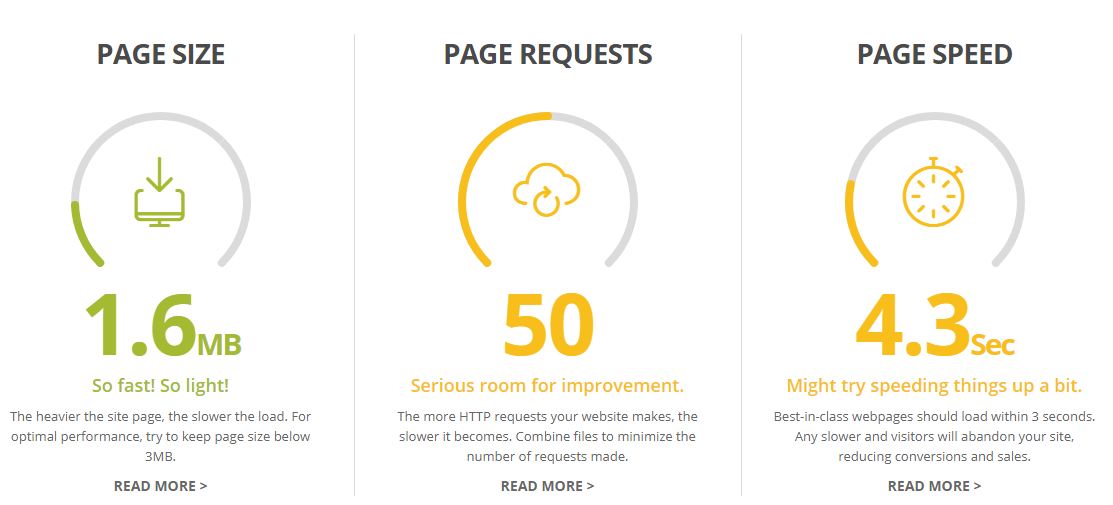 (Source: Website.grader.com)
(Source: Website.grader.com)
What makes this so useful, is not only that it shows the results, but that it also tells you how to resolve any issues. For example, a site may have too many different HTTP requests – which means there are too many files on it. Those files could include text, images, or any other media.
The biggest culprit for HTTP requests are high-resolution images. So, clear out any that you do not need and try to reduce the size of the ones that you do.
There are a number of other factors behind slow loading times, which include:
- Number of plugins: Including chat boxes, social media integrations, and any other third-party tools
- Browser caching: Enabling this will mean returning visitors experience a quicker load time
- Simple site design: Do not add any unnecessary components to your site, such as additional pages, when one will do the job
6. Product Descriptions
Creating product descriptions is an art-form in its own right. You need to let customers know what the product does and what they stand to gain from it.
There are some rules you should follow:
- Create your own: Relying on a standard description should be avoided. There are two reasons for this:
- Uninspiring: A standard description can be boring and out of sync with the specifics of your brand
- Duplicate content: Other stores will simply use the manufacturer’s description – this leaves you at risk to being reprimanded by Google for duplicate content
- Scannable: The description needs to be scannable and take no longer than a few seconds for the customer to get the idea – use formatting to break up the text
- Tailor it: Keep your audience in mind when curating the description – if your brand is casual and fun, then your content should reflect this
- SEO: Search engine optimization (SEO) helps to drive visitors to your site. This alone will not improve your conversion rate but it can bring in extra revenue for your business. So it pays make your product descriptions SEO friendly.
- Check your spelling: This may be obvious but it’s very important. Customers do notice typos, which can make your business look unprofessional.
These rules do not mean product descriptions should be long. Here’s an example from ladies clothing and accessories retailer, ShopBop: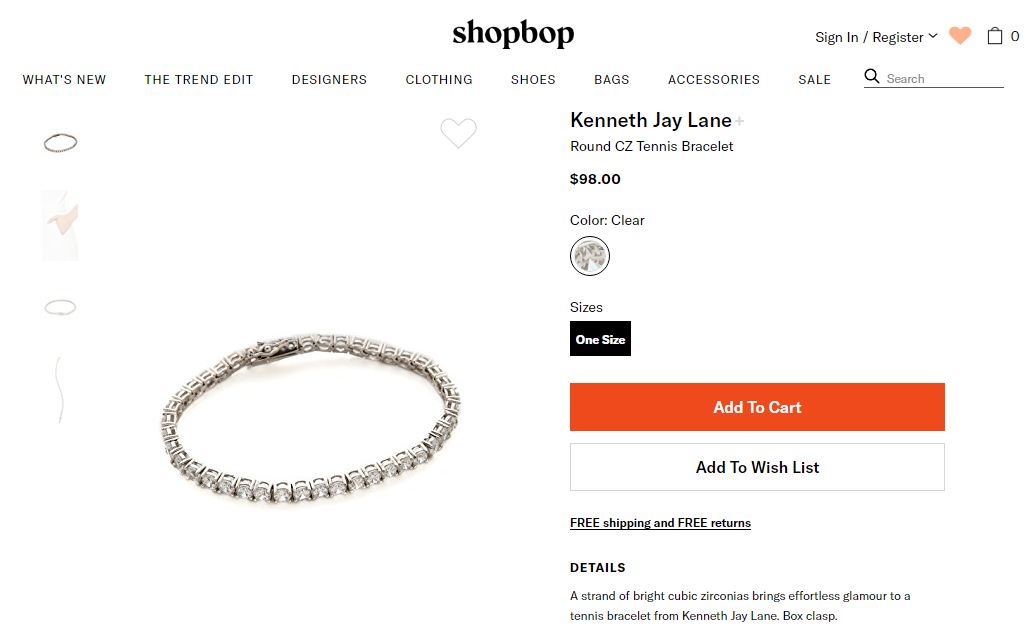 (Source: Shopbop.com)
(Source: Shopbop.com)
The description includes minimal content, yet all the necessary details including color, size, and price. There’s also the ‘show more? option – which leads to this:

(Source: Shopbop.com)
This type of approach is perfect for the ShopBop brand. However, it’s not for everyone. When writing product descriptions, consider what your visitors expect and deliver accordingly.
7. Email Marketing
If there’s a digital marketing channel that gives a higher return on investment (ROI) than email, we are yet to find it.
Generating a ROI of $44 for every $1, email marketing is pivotal for any e-commerce business. The foundation to its success is a healthy, organic list of subscribers. Never miss an opportunity to invite your site visitors to sign up to your email newsletters.
You can set up accounts, launch competitions, or simply list the benefits of receiving emails from your brand. And when they buy from you, customers are now used to the idea of sharing their email address. Take advantage of this and make it a required field in the purchasing process.
The next step is to maintain and clean your email list. By their nature, your lists of subscribers can become stale, with addresses becoming dormant or inactive. Allowing this to build up will affect your deliverability and sender ranking.
At DirectIQ, we offer a comprehensive email list cleaning system that does the leg work for you. (Source: Directiq.com)
(Source: Directiq.com)
Follow the step-by-step guide on how to use it here.
The value in maintaining a clean email list can only be fully realized through segmentation. By segmenting your subscribers, you will be able to carry out targeted email marketing.
Proven to provide a 760% increase in revenue, targeted emails ensure the right emails go to the right audiences. How you segment your email list varies from industry to industry. Here are just some examples of different categories you could segment your subscribers by:
- Gender
- Location
- Education level
- Income level
- Interests
- Purchase history
- Age
It’s important understand your audience. Consider who is most likely to buy the products you promote. If you have an email list of 10,000 subscribers, not all of them share the same interests. So split your email list into smaller, more accurate segments to maximize your returns.
Conclusion
E-commerce best practice is essentially about giving your customers the highest quality service. They need to feel reassured that it’s safe and easy to buy from your brand.
There should be an emphasis on simplicity throughout. The fact is, the more complicated your site is, the slower it will load and the more difficult it will be to navigate. Two major turn-offs for potential customers.
Images and product descriptions also play an important role in the success of any e-commerce store. The secret here is present your products in a way that fits your brand. The use of humor from Dollar Shave Club and how Di Bruno Bros utilize imagery are two such examples.
Email marketing allows you to communicate your message to your subscribers. It’s the only way you can directly reach out to your market. However, a clean and engaged email list is the bedrock to a successful email strategy.
Kick-start your e-commerce business today with DirectIQ.











